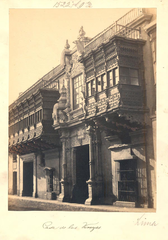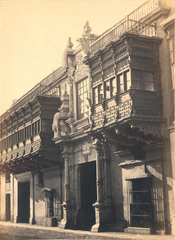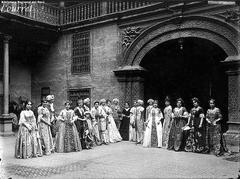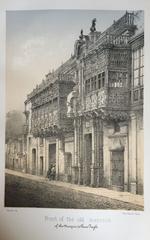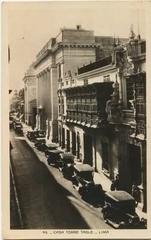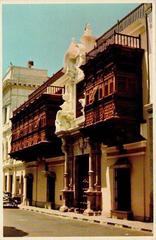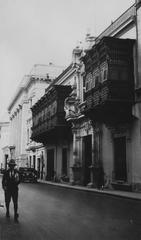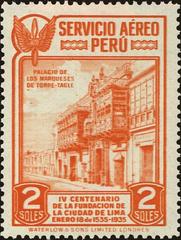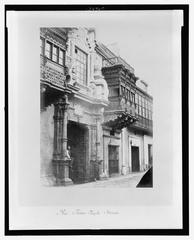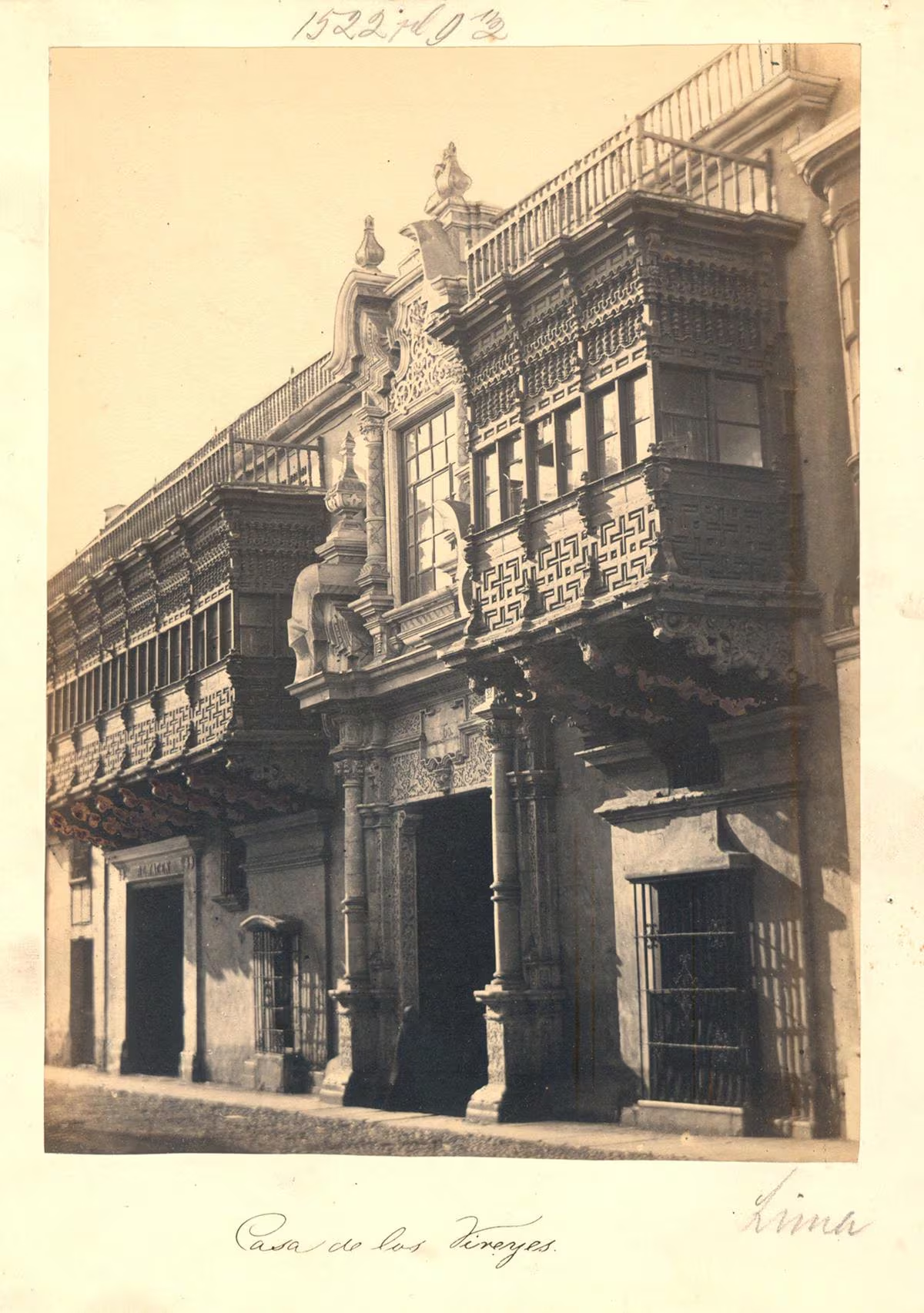
Torre Tagle Palace: Visiting Hours, Tickets, and Comprehensive Tourist Guide for Lima, Peru
Date: 14/06/2025
Introduction: Discovering Torre Tagle Palace
Torre Tagle Palace (Palacio de Torre Tagle) stands as one of Lima’s most exquisite colonial landmarks, embodying the city’s aristocratic past and architectural splendor. Constructed between 1715 and 1735 for Don José Bernardo de Tagle y Bracho, the first Marquis of Torre Tagle, this palace is a masterful blend of Andalusian Baroque and Mudéjar styles. Its iconic cedar and mahogany balconies, ornate façades, and art-filled interiors provide a rare window into the cultural and social milieu of colonial Lima. Today, as the seat of Peru’s Ministry of Foreign Affairs, the palace remains a symbol of diplomatic heritage and national identity, offering guided tours during special events for those eager to explore its depths (whichmuseum.com; PrensaPeru.pe; Salkantay Trek Machu).
Table of Contents
- Historical Overview and Evolution
- Architectural Features and Artistic Treasures
- Visitor Information: Hours, Tickets, and Accessibility
- Travel Tips and Nearby Attractions
- Preservation and Restoration
- Cultural Significance
- Frequently Asked Questions (FAQ)
- Conclusion and Practical Recommendations
- References
Historical Overview and Evolution
Origins and Construction
Commissioned in the early 18th century, Torre Tagle Palace was conceived as both a private residence and a public statement of power by the influential Tagle family, whose wealth stemmed from trade and governmental service (whichmuseum.com). The palace’s location on Jirón Ucayali was strategic, positioning it near Lima’s most important civic and religious buildings.
Role Through the Centuries
Throughout the 18th and 19th centuries, the palace functioned as a hub for Lima’s elite, hosting aristocratic gatherings and diplomatic events. Its prominence continued into the republican era, and in the 20th century, the Peruvian government acquired the building, designating it as the Ministry of Foreign Affairs. This adaptive reuse ensured the palace’s continued relevance and preservation (whichmuseum.com).
Architectural Features and Artistic Treasures
Exterior: Façade, Balconies, and Courtyard
- Façade: Painted in a distinctive pink hue, the façade is a Baroque masterpiece with a two-tiered stone portal and the Torre Tagle family’s coat of arms (Jordan Gassner Travel Blog).
- Balconies: The two enclosed wooden balconies are among Lima’s finest, crafted from cedar and mahogany and featuring intricate latticework—a hallmark of Mudéjar influence (PrensaPeru.pe).
- Courtyard: Inside, a Sevillian-style patio with arcaded galleries and blue tilework offers a tranquil retreat and reflects colonial architectural traditions (Jordan Gassner Travel Blog).
Interior: Ceilings, Furnishings, and Art Collection
- Woodwork: The palace’s coffered (artesonado) ceilings display geometric motifs inspired by Islamic Spain, showcasing the skill of both Spanish and local craftsmen (PrensaPeru.pe).
- Salons: Period furnishings range from Louis XV to Neoclassical and Queen Anne styles, many sourced from the Ortiz de Zevallos collection.
- Art Collection: The palace houses works by prominent Peruvian artists, including paintings from the Cusco School and portraits by José Gil de Castro and others.
- Decorative Elements: Stained glass, patterned tiles, wrought-iron fixtures, and a historic 18th-century carriage enrich the palace’s interiors (Jordan Gassner Travel Blog).
Visitor Information: Hours, Tickets, and Accessibility
- Regular Hours: Torre Tagle Palace is typically open for guided tours Tuesday to Sunday, 9:00 AM to 5:00 PM, though access is generally limited to special events or prior arrangements (GPSmyCity).
- Tickets: Admission is usually free for guided tours, with advance booking highly recommended due to limited capacity.
- Booking: Reserve through the Ministry of Foreign Affairs website or contact local tourism offices. Some tours are available in English; confirm language availability when booking.
- Accessibility: The palace’s historic nature means accessibility is limited—there are no elevators, and upper floors are not wheelchair accessible. Contact the palace in advance for details.
- Photography: Non-flash photography is allowed in designated areas; tripods and professional equipment are usually restricted.
Travel Tips and Nearby Attractions
- Best Time to Visit: Early mornings and weekdays offer a quieter experience.
- Combine Visits: Torre Tagle Palace is near the Plaza Mayor, Cathedral of Lima, Archbishop’s Palace, and the Basílica and Convent of San Francisco—perfect for a day of historical exploration.
- Dining: The surrounding district features local restaurants and cafés, such as Museo del Pisco and Peru Gourmet Restaurante Bar (Trip.com).
- Transportation: Easily accessible by public transit or taxi; several hotels are located nearby for overnight stays.
- Safety: The area is safe during the day, but standard urban precautions apply—keep valuables secure and use registered taxis after dark.
Preservation and Restoration
Ongoing restoration projects—most recently in 2024—have focused on preserving the palace’s façade, balconies, and structural elements. The Ministry of Foreign Affairs, occupying the palace since 1920, ensures both its maintenance and its use as a venue for diplomatic events and cultural activities (PrensaPeru.pe).
Cultural Significance
Torre Tagle Palace epitomizes the fusion of Spanish, Moorish, and Indigenous influences that define Peruvian identity. Its iconic balconies have become symbols of Lima and are featured in art and tourism campaigns nationwide (Backpackers Blueprint). As a living monument, it bridges Lima’s colonial past with its modern diplomatic role.
Frequently Asked Questions (FAQ)
Q: What are the Torre Tagle Palace visiting hours?
A: Generally open Tuesday–Sunday, 9:00 AM–5:00 PM, but only for special events or guided tours. Confirm before visiting.
Q: Is there an admission fee?
A: Guided tours are usually free; some events may charge a small fee. Advance booking is advised.
Q: Are English-language tours available?
A: Yes, on request or during select events. Confirm language options when booking.
Q: Is the palace wheelchair accessible?
A: Access is limited due to historic architecture; upper floors are not accessible.
Q: Can I take photos inside?
A: Non-flash photography is permitted in some areas. Follow guide instructions.
Q: Where is Torre Tagle Palace located?
A: Jirón Ucayali 363, Lima historic center—just a short walk from the Plaza Mayor.
Conclusion and Practical Recommendations
Torre Tagle Palace is a must-see for anyone interested in Lima’s colonial and diplomatic heritage. While public access is limited, guided tours offer an enriching experience of its architectural and artistic treasures. For the best visit:
- Book tours in advance, especially during peak seasons or for English-language options.
- Combine your visit with other historic sites in the heart of Lima.
- Check the official Ministry of Foreign Affairs website or contact local tourism offices for the latest information on access, events, and guided tours.
To enhance your experience, download the Audiala app for audio guides and up-to-date cultural content. Follow our social media channels for restoration updates and special event announcements.
References
- whichmuseum.com
- PrensaPeru.pe
- Wikipedia
- Salkantay Trek Machu
- Trip.com
- Jordan Gassner Travel Blog
- Backpackers Blueprint
- LAC Geo
- CuscoPeru
- GPSmyCity
- LimaEasy
